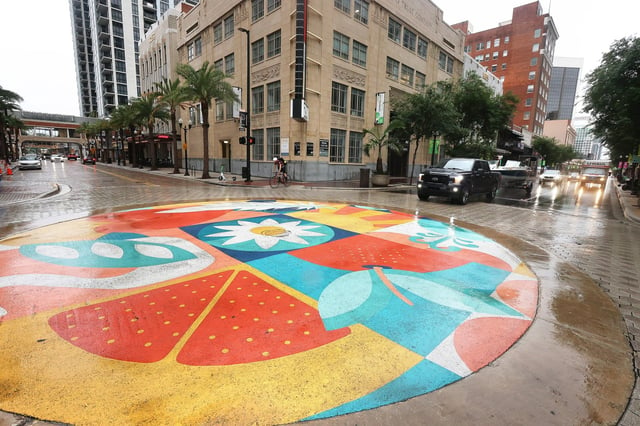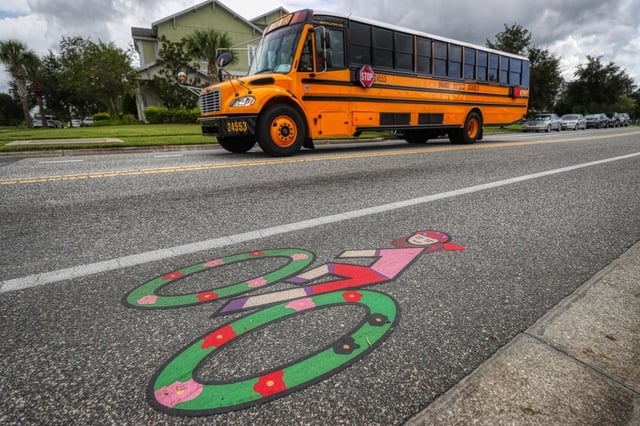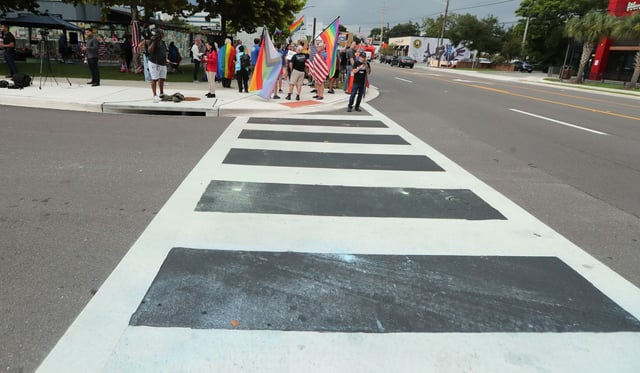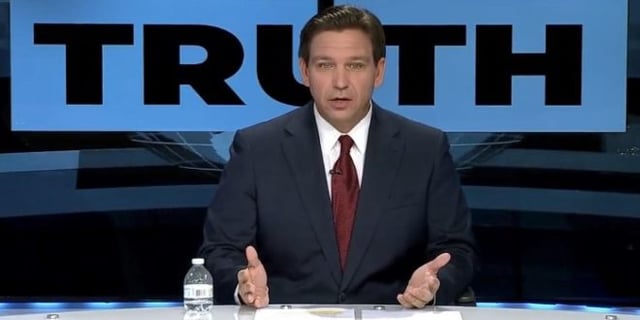Overview
- Orlando crews began covering 14 decorative crosswalks today after FDOT flagged 18 sites, with the city noting four are on state roads and outside its control.
- FDOT ordered the removal of student-designed bike‑lane art outside Laureate Park Elementary that the agency promoted in May as part of a safety initiative.
- Roughly 400 roadway art projects statewide are now on potential removal lists, with deadlines clustered around Sept. 3–4 and warnings that noncompliance could affect funding.
- An FDOT crew twice painted over the rainbow crosswalk at the Pulse memorial after protesters restored it, underscoring the state’s stepped‑up enforcement.
- Gov. Ron DeSantis and FDOT leaders say roads cannot carry political messages, while federal guidance issued July 1 by Transportation Secretary Sean Duffy urges consistent, non‑art markings.



